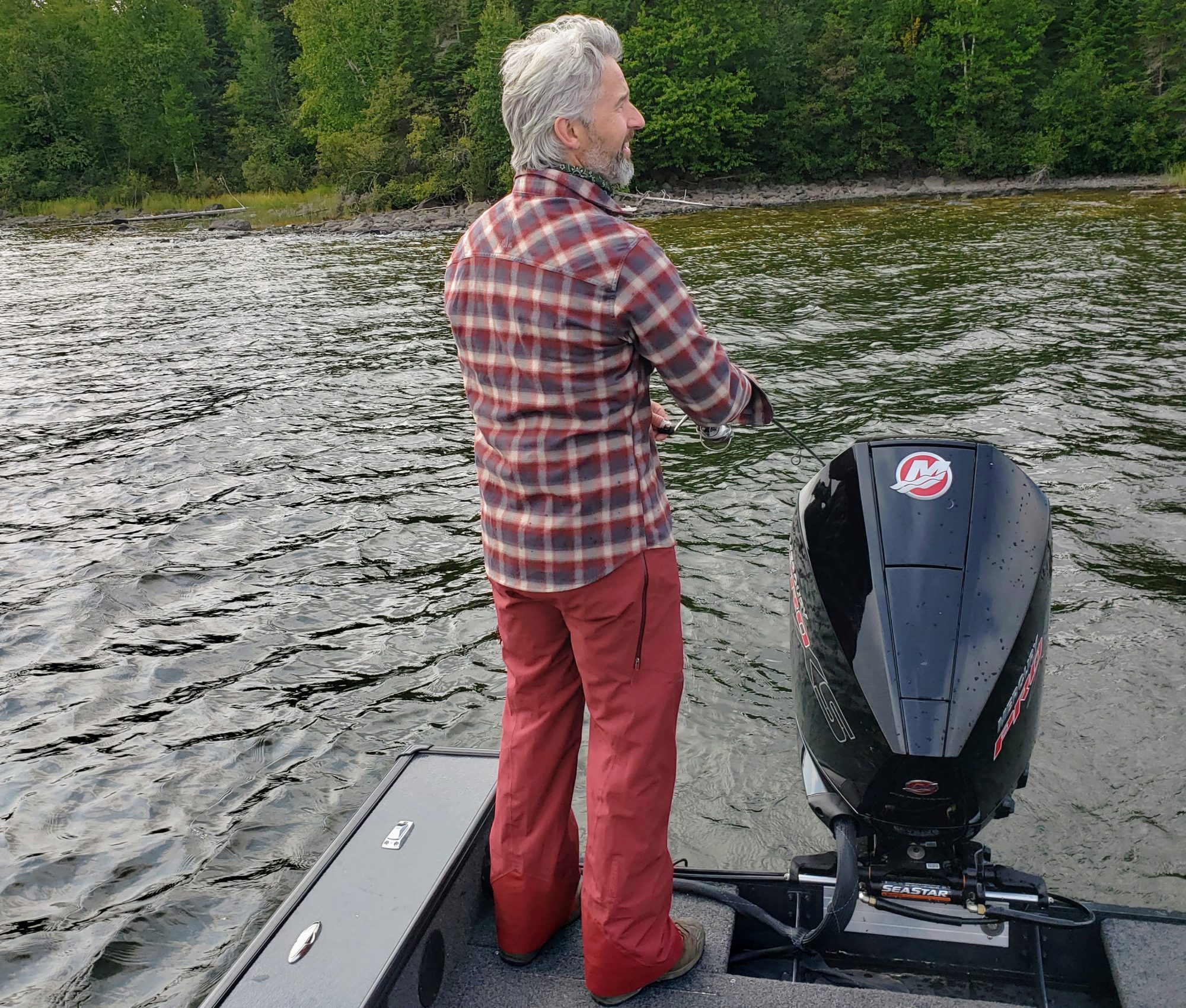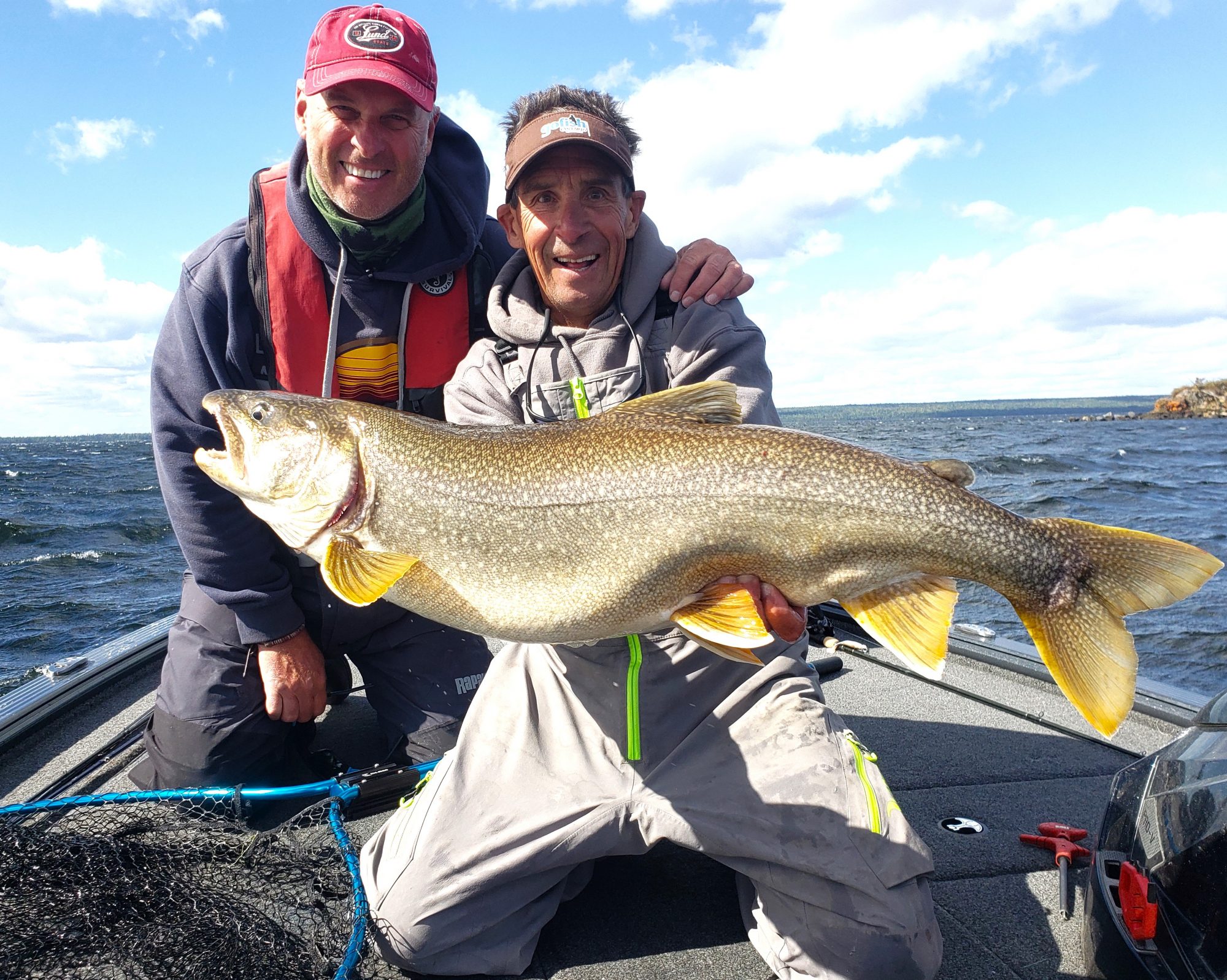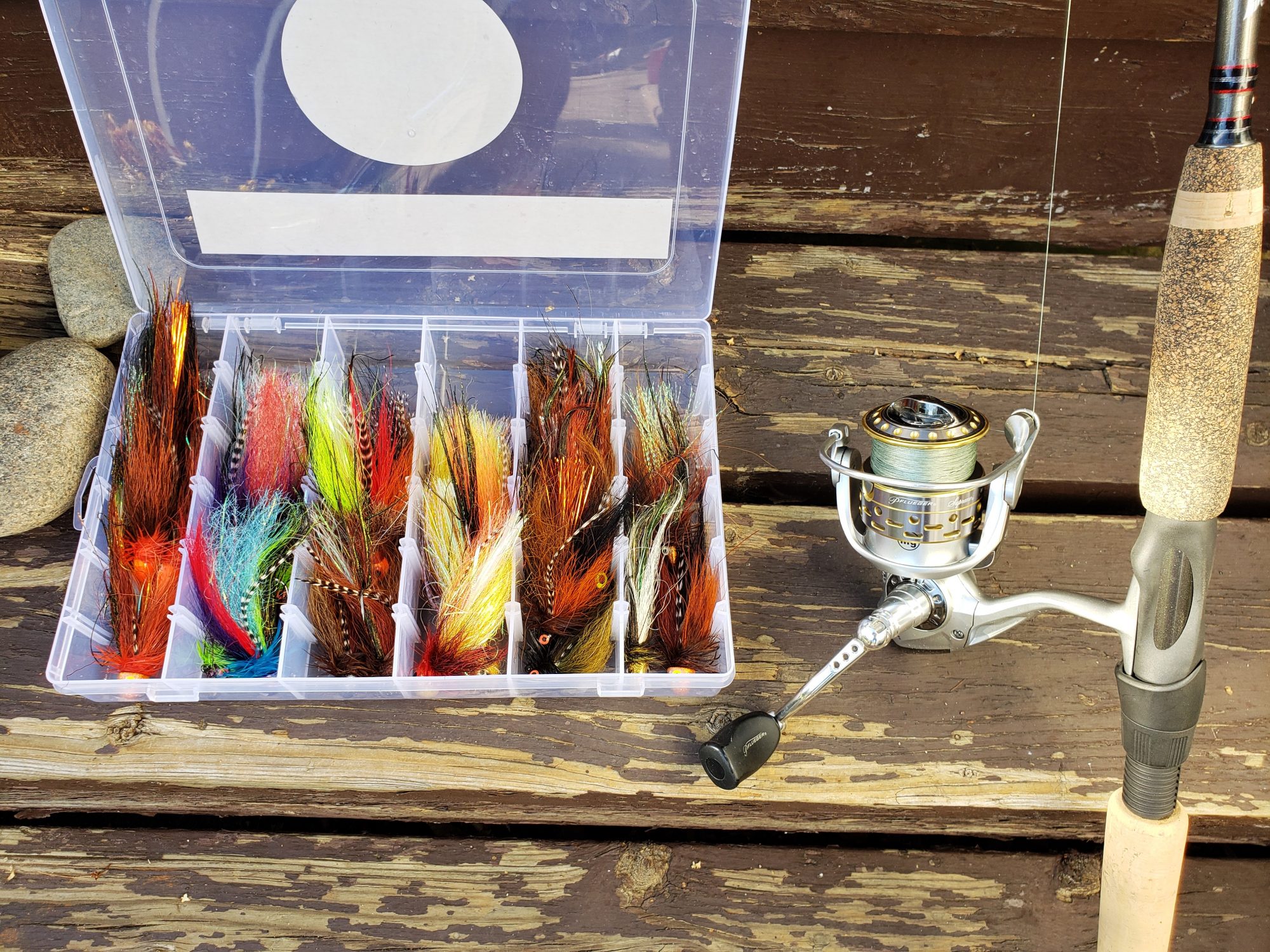
Top Five Lure Presentations for Lake Trout
Back to Superior Country BlogThere are not many places better to catch lake trout in the world than Superior Country. The giant lake like Superior and Nipigon are the last bastions of monster lake trout in the central part of North America. On top of that, there are hundreds of inland lakes that hold lake trout and some big ones to boot. There are many different ways to catch lake trout, but lets focus in on five key lure presentations for them.
Trolling Wobbler Spoons

Lake trout that hit a trolled spoon lays in a net – G Ellis photo
One of the things I love most about lake trout is that they can be caught with the simplest – some might say crudest – of techniques. These techniques include using wire line, lead core line and heavy lead weights to get big spoons down. The wobbling spoons themselves are also quite simple and can make wide movement with little speed. In my opinion, the best all around trolling spoon for lakers is the Williams Wabler. It has caught more, big lakers for me than nearly all other spoons combined. A hammered silver or brass Wabler are the go-tos, but silver and blue is another good one. Other good wobbling spoons include the Doctor Spoon, Canoe Spoon, Aqua Spoon, Wordens Worry and Red Eye Wiggler.

The Wordens Worry is one of the more popular lake trout spoon in Superior Country – G Ellis photo
Generally, you want to have the spoon within a few feet of bottom and wobbling slowly. My favourite technique is called a three-way rig: You have a heavy weight (2 to 6 oz.) on a dropper tied to a three-way swivel. On one of the eyes tie a leader that is the same length as the dropper, then a clip and finally your spoon. Tie the last eye of the three way to the main line. Troll or drift slowly and work the weight along the bottom. The spoon flutters just off bottom and in the trout’s strike zone. This is a super effective way to catch big lake trout in all situations.
Vertical Jigging

Casting jigs for lake trout along a shore line – G Ellis photo
While trolling is the most common technique for lake trout, there are situations when sitting on top of fish and jigging them is deadly. When the water is calm and fish are grouped up around shoals or even on flats, dropping jigs down to them can be very effective. The number one lure for this is a four inch white or pearl tube with a jig between a half and an ounce. Let the tube drop down to the bottom , then slowly reel it up, stopping every once and a while. I’ve seen lake trout follow a tube right to the surface. Not the desired outcome, but very exciting.

Gord Ellis (l) and James Lindner, of Angling Edge, with trophy lake trout
You can also use jigging spoons and fish them aggressively just off the bottom. This is not unlike ice fishing for lakers, except for the cold and winter part. My favourite jigging spoons include the Swedish Pimple, Hopkins Spoon, Kastmaster and Krocodile. Spoons of a half to one ounce are the most commonly used.
Vertical jigging does not always work, but when it does, it is usually gang busters.
Casting Bucktail jigs and Plastic Swimbaits
It doesn’t get much simpler or basic than casting jigs, but many lake trout anglers overlook this technique. Casting jigs works best in spring and fall, but they can catch lake trout anytime of year if conditions are right. I’ve seen situations in the summer where lake trout are active on the surface in both Lake Nipigon and Lake Superior.

Lake trout caught on a Mighty Mitch and Jungle Joe jigfly
Bucktail jigs have a great action and can come in some very enticing colours. The bucktail jig made by Mighty Mitch and Jungle Joe’s jigflies in Thunder Bay are some of my favourites. In the spring, the smelt pattern jigfly is tough to beat. Later in the fall, darker jigflies – and those with a bit more colour – get the nod. Soft plastic swimbaits that look like minnows can also be very deadly. There a wide variety of styles, including paddle tails, power minnows, curly tail and straight tail designs. I like four-inch paddle tail baits, but you can go five-inch or larger where some of those trophy sized lakers live. Jighead weights of 3/8th, 5/8th or one ounce should cover off most of your needs when chasing lake trout.

Mighty Mitch and Jungle Joe jigflies are a great choice when casting to lake trout – G Ellis photo
RELATED ARTICLE: 10 Lake Trout Facts
Trolling Deep-diving crankbaits

Deep diving crankbaits can get down to lake trout without the need of lead weights – G Ellis photo
The trolling game is well known as a great way to catch lake trout. Yet many overlook using deep diving crankbaits to catch lakers. The nice thing about diving crankbaits is you can fish without extra lead or weight. Crankbaits with a deep diving bill can get you down to 20 feet or more depending on the size of the diving bill and what line you are trolling with. When lake trout are deeper than 30 feet, deep-diving crankbaits likely aren’t your best option.

Lake trout are a native fish to Ontario and can grow large – G Ellis photo
However, in spring and early summer and then in the fall, lake trout start sticking their noses back into the shallower stuff. This is where trolling a diving crankbait will really shine. There are several different cranks that I like including the Rapala Deep-diving Husky Jerk, the Rapala Tail Dancer, the Live Target Deep-diving Smelt and the Reef Runner. I find trolling with 20 pound braid allows the crankbait to reach its maximum depth. Use a baitcasting reel with a counter so you can be consistent with depths.
Casting Spoons

While we have already discussed, trolling with spoons, the casting game is a whole different deal. Casting spoons is primarily done early and late in the lake trout season, when the water is cold and the fish are as shallow as they will be all season. Working a spoon over the tops of reefs and along the wind swept shores of lakes is a deadly way to catch fish. My favourite casting spoons for lakers include the Lucky Strike Half Wave, Williams Nipigon Spoon, Luhr Jensen Krocodile and Acme Little Cleo. Spoon weights can vary from one quarter ounce to 5/8 ounce depending on water depth and wind. I often change out factory hooks for Gamakatsu trebles as they are super sharp.

James McLean and Gord Ellis with a lake trout double header -G Ellis photo
On some spoons, the hooks are too small and need to be bumped up a size. All spoons run the best at different speeds, so be sure to match the retrieve with the spoon. I tend to cast spoons with spinning gear, but use a longer rod of about eight feet with a large spinning reel loaded with 20-pound braid. Run at least a foot or two of 12-pound fluorocarbon as your leader. This will give your line a little stretch when you set and removes the possibility of fish seeing the braid. Few sights are as blood boiling as having a three-foot long laker follow a spoon to the boat before eating it.

Lake Nipiogn lakers grow big – G Ellis photo
Lake trout are one of the precious jewels of Superior Country. Use these presentations to catch your personal best laker this season.

 Walleye
Walleye Northern Pike
Northern Pike Lake Trout
Lake Trout Brook Trout
Brook Trout Steelhead
Steelhead Salmon
Salmon Smallmouth Bass
Smallmouth Bass Perch
Perch Superior Picnics
Superior Picnics
